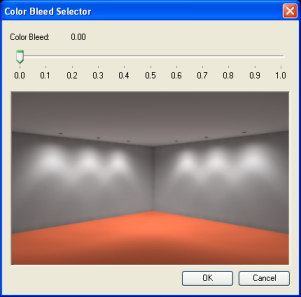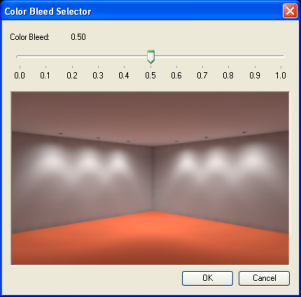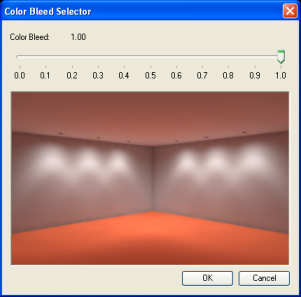Color Bleed
Color Bleed is a real, physically observable phenomenon that occurs when strongly saturated colors are reflected to adjacent surfaces. Take a brightly colored surface (like red construction paper) and hold it horizontally next to any white wall. You'll observe a red tint on the wall from the red light reflected off the paper; the red color evident on the white wall is called color bleed.
Computer generated environments with strong colors (e.g., a bright green carpet) tend to produce a color cast in the rendered environments. In real life, our eyes and brain compensate for the color cast and we would see the walls and ceiling as white (a process known as Chromatic Adaptation). Color photographs and video displays do not compensate for the color cast automatically, and the rendered environment can appear unrealistic in this regard. The Color Bleed scale simulates human color vision adaptation.
The ElumTools Color Bleed property allows control over color bleed for different materials and is assigned in the ElumTools Material Mapping dialog. Materials with strongly saturated colors should have less "bleed" applied than less saturated colored surfaces.
By default, the value is 1 (100%, full Color Bleed); it may be decreased to 0 (0%, no Color Bleed). The value may be entered directly by typing in the cell, set by using the scrolling arrows, or specified in the Color Bleed dialog. To use the Color Bleed dialog, click on the ellipsis (dots) icon.

|

|

|
| Color Bleed = 0 (no bleed) | Color Bleed = 50% | Color Bleed = 100% |
